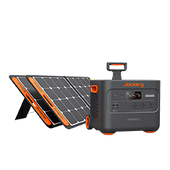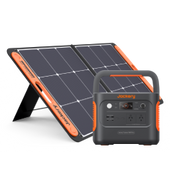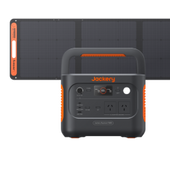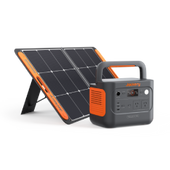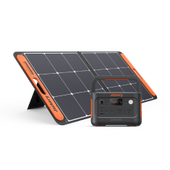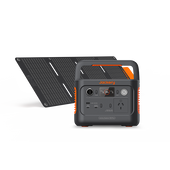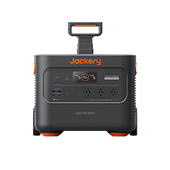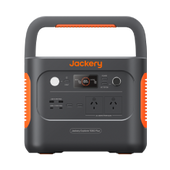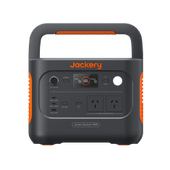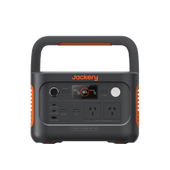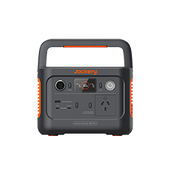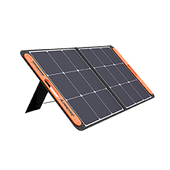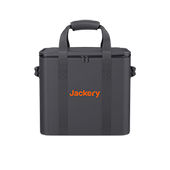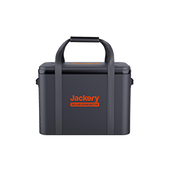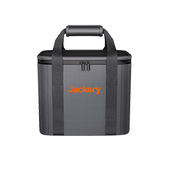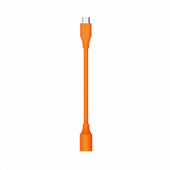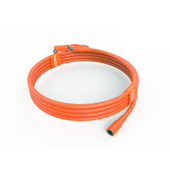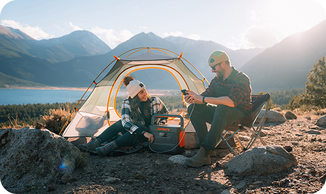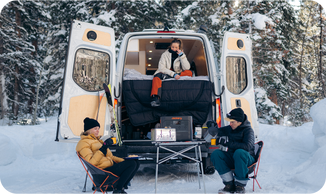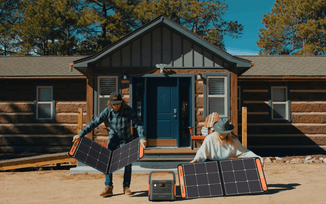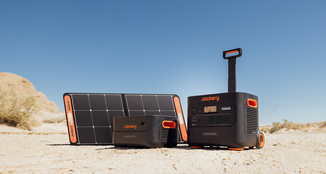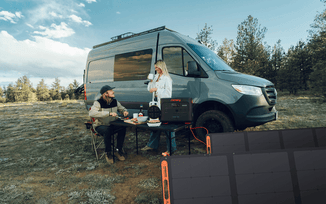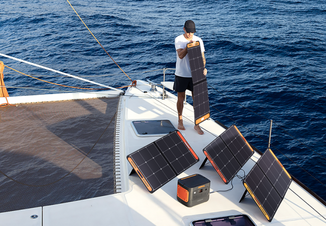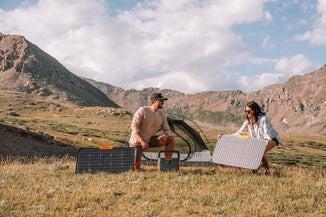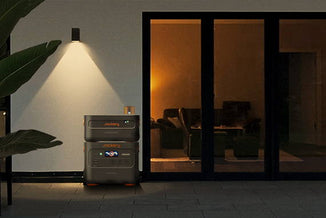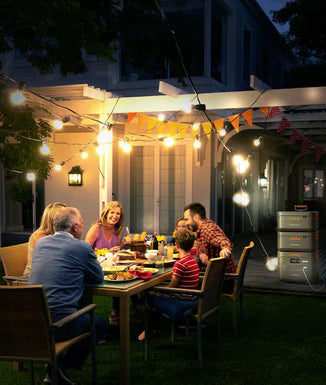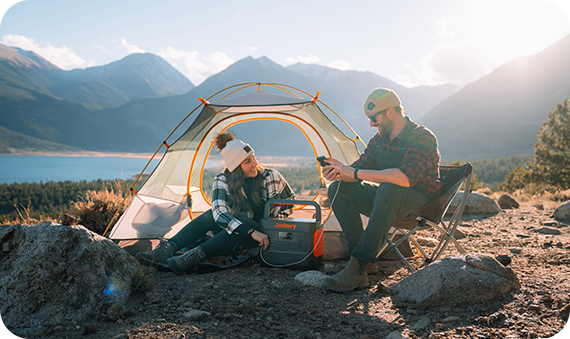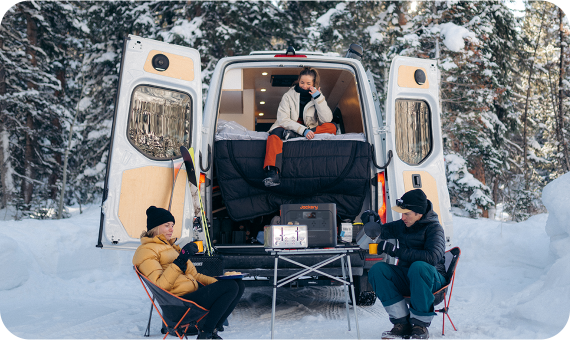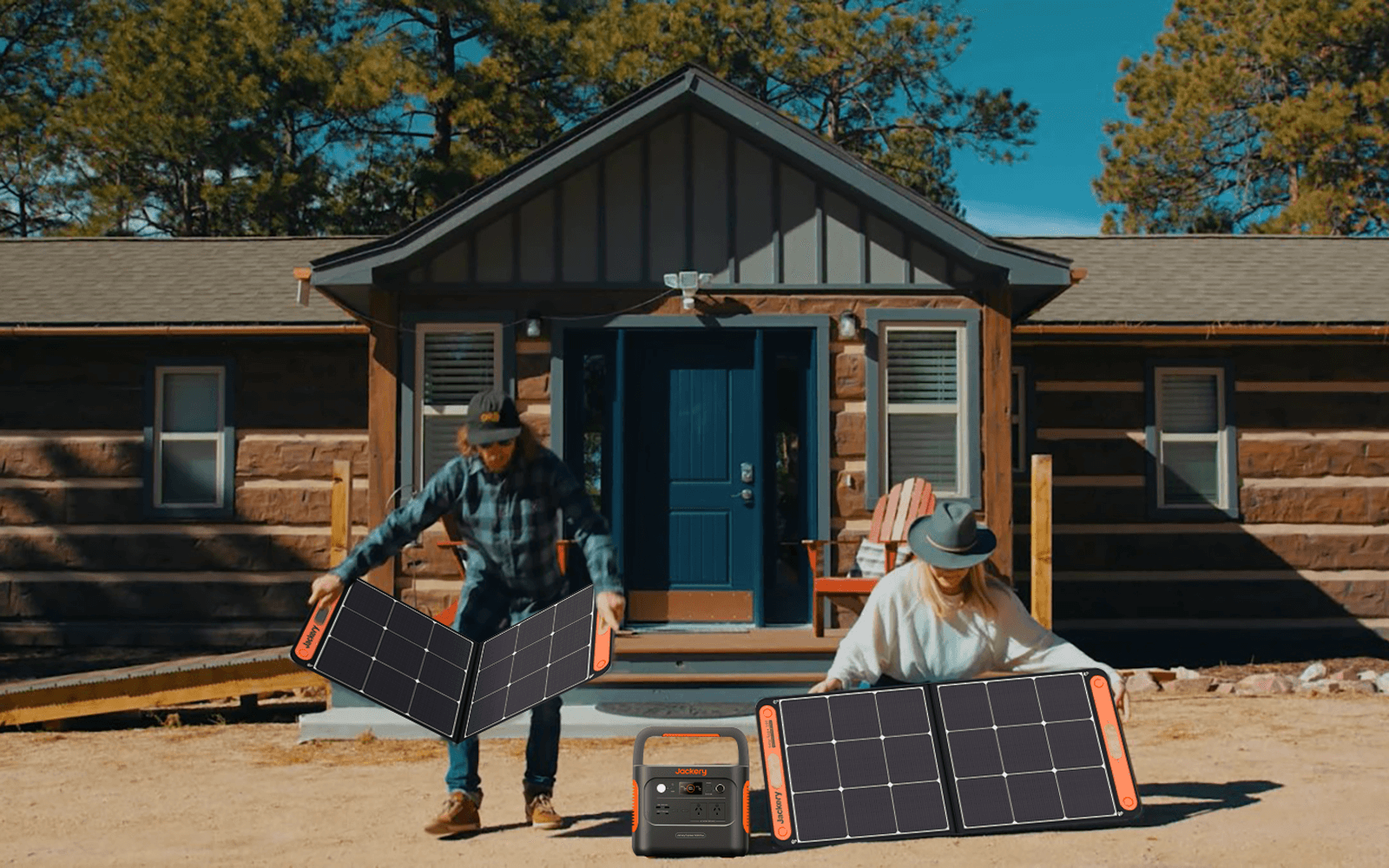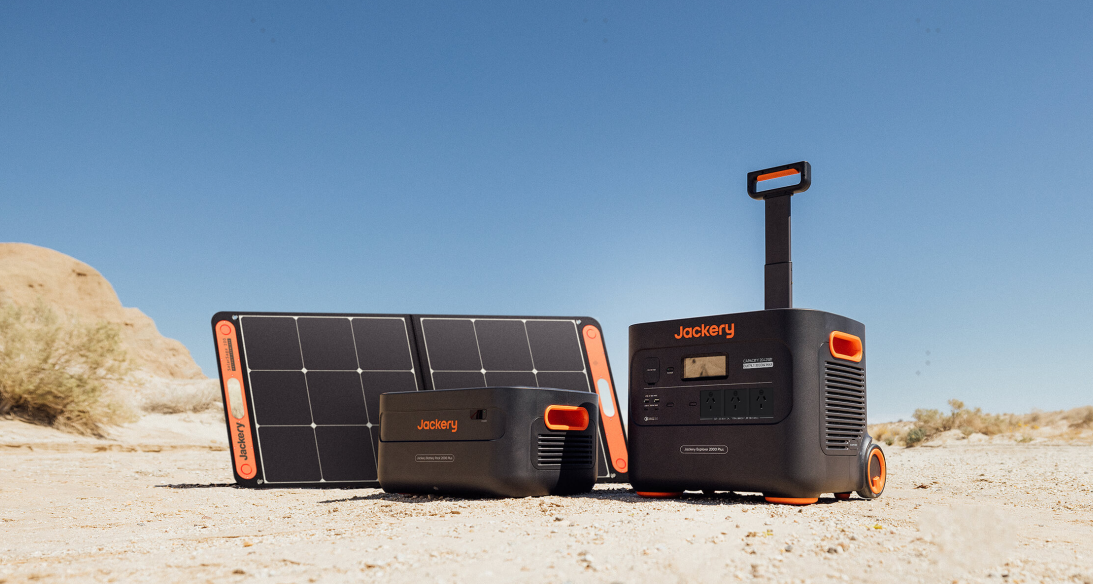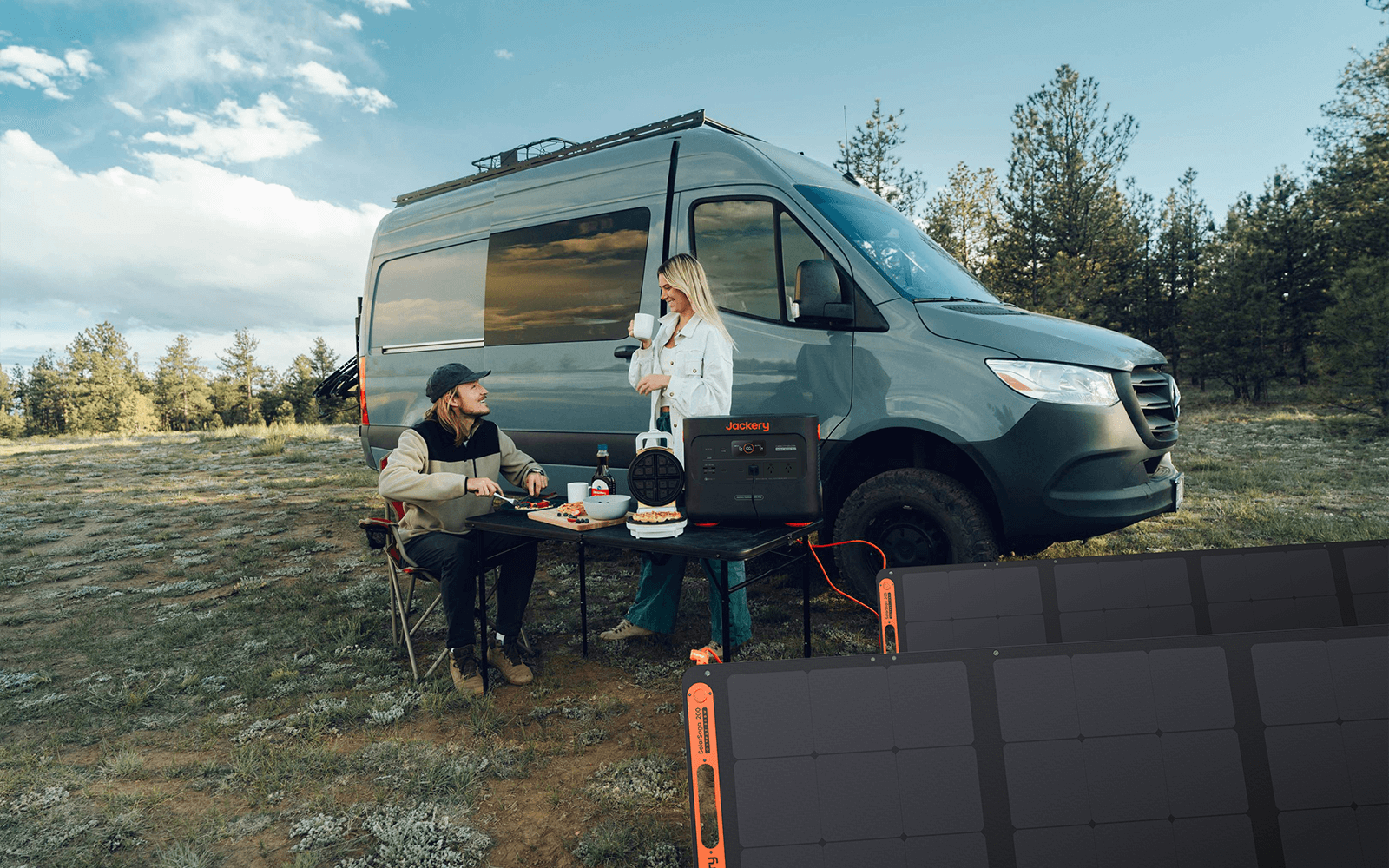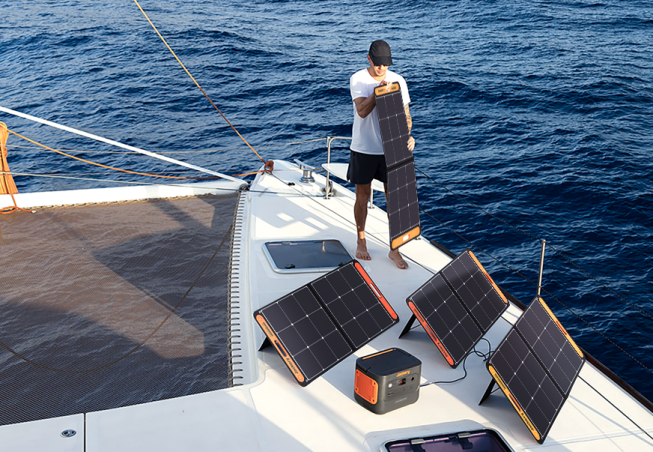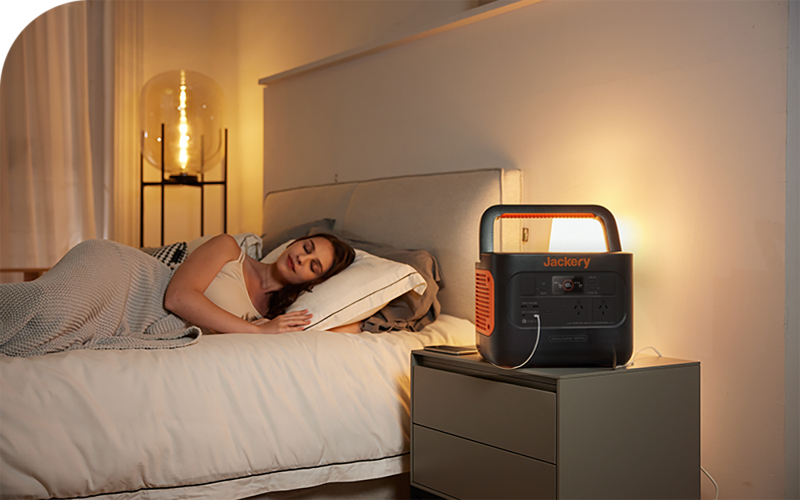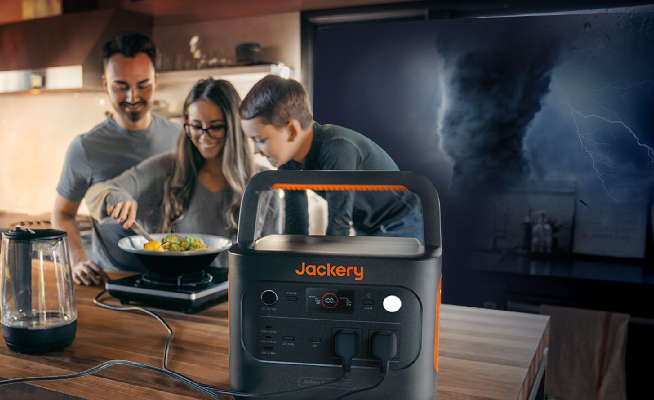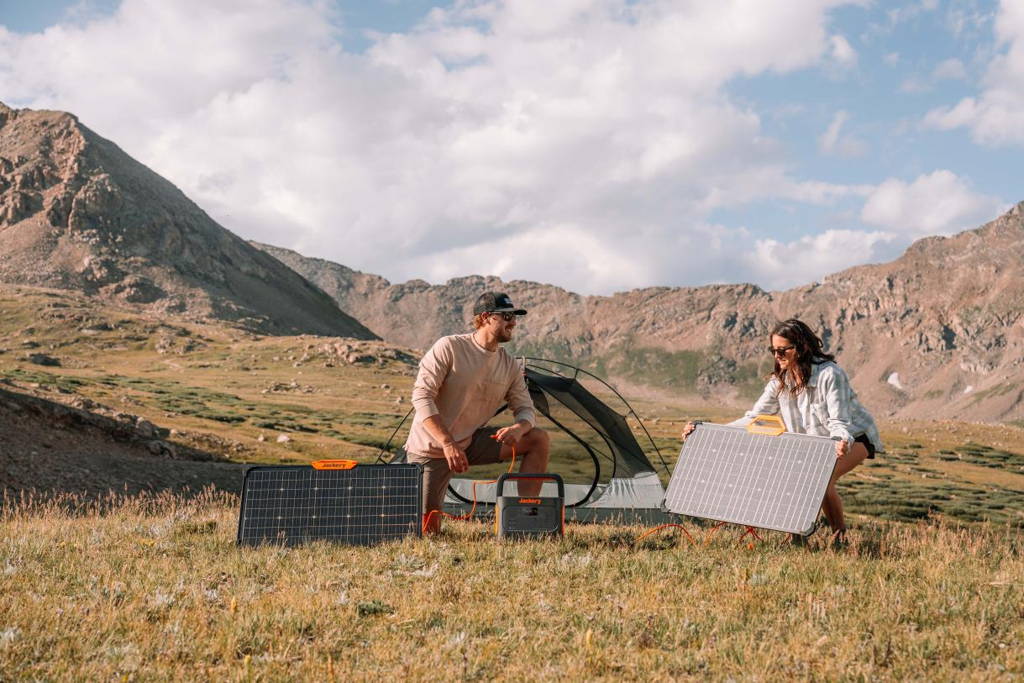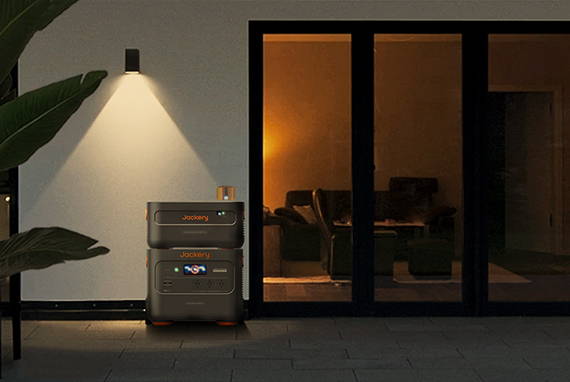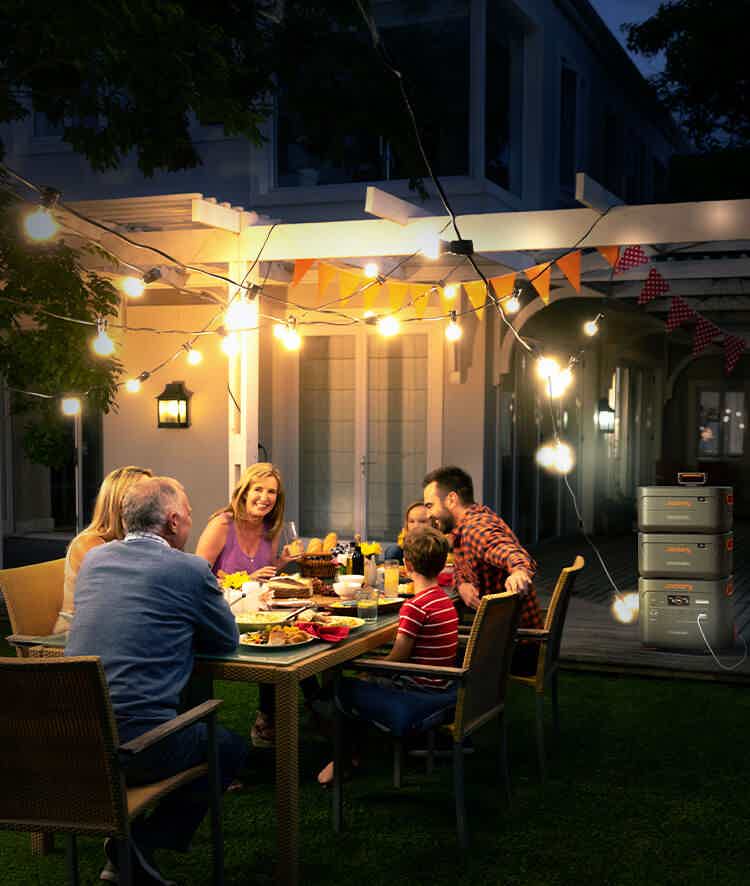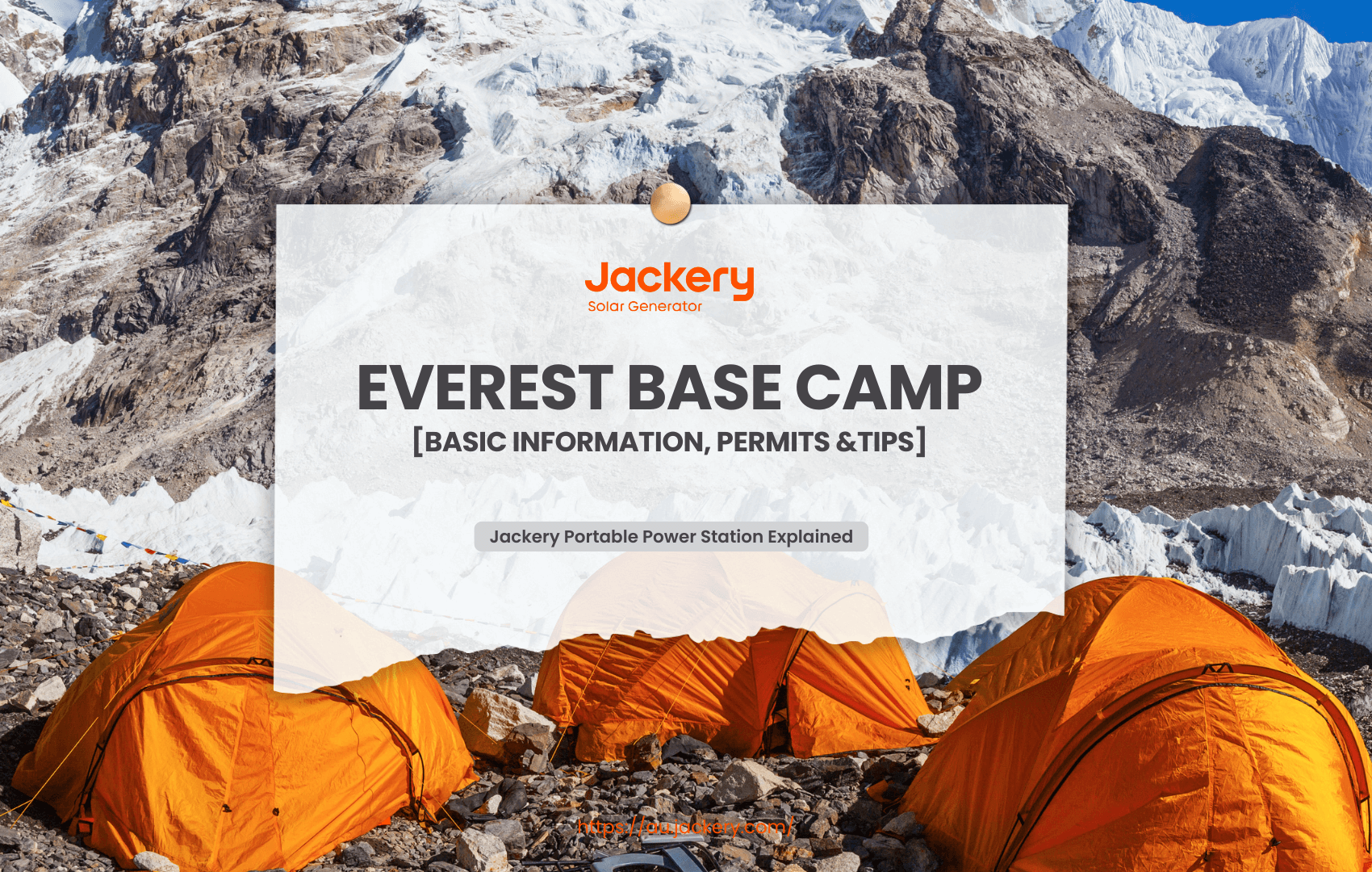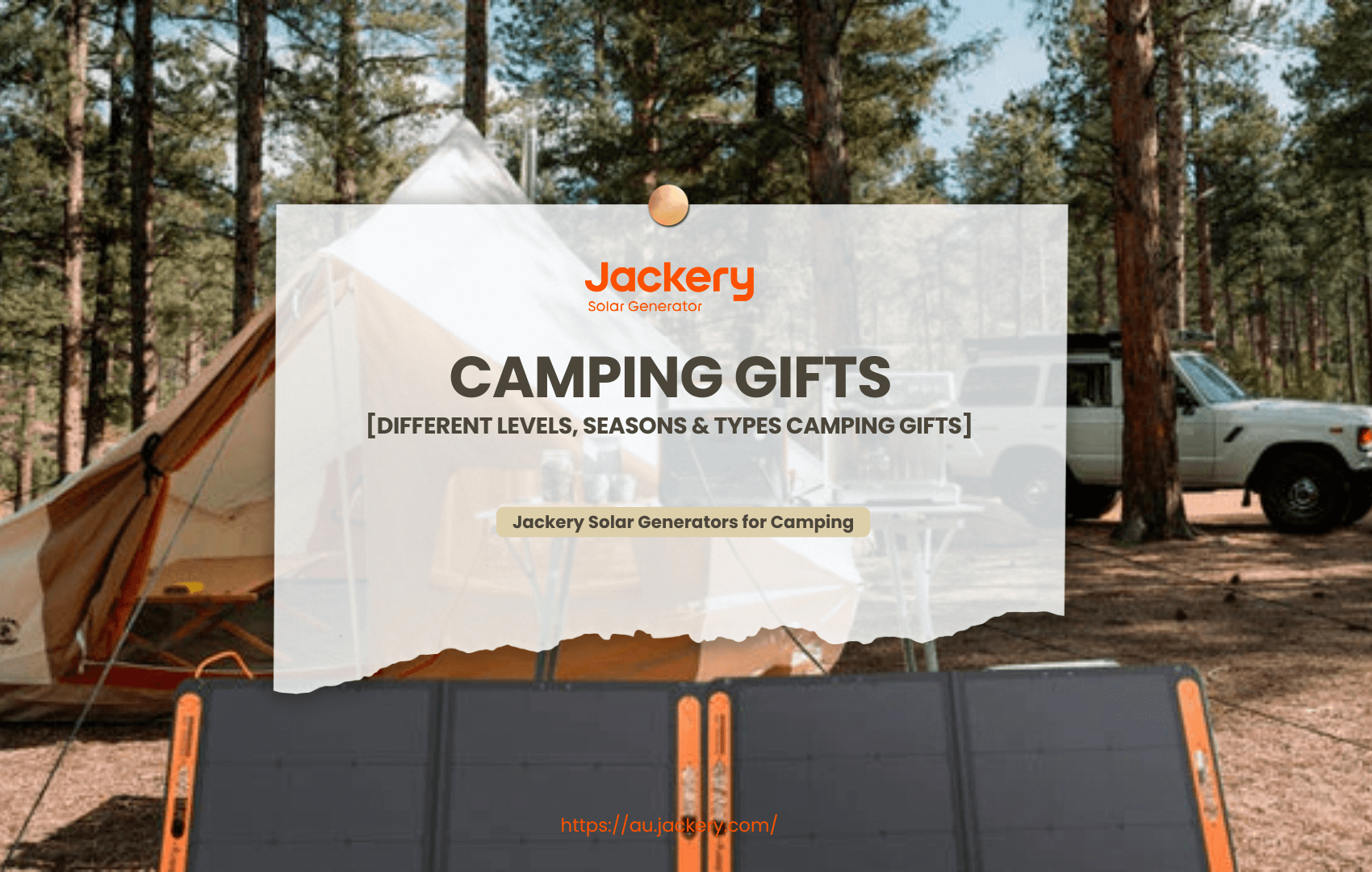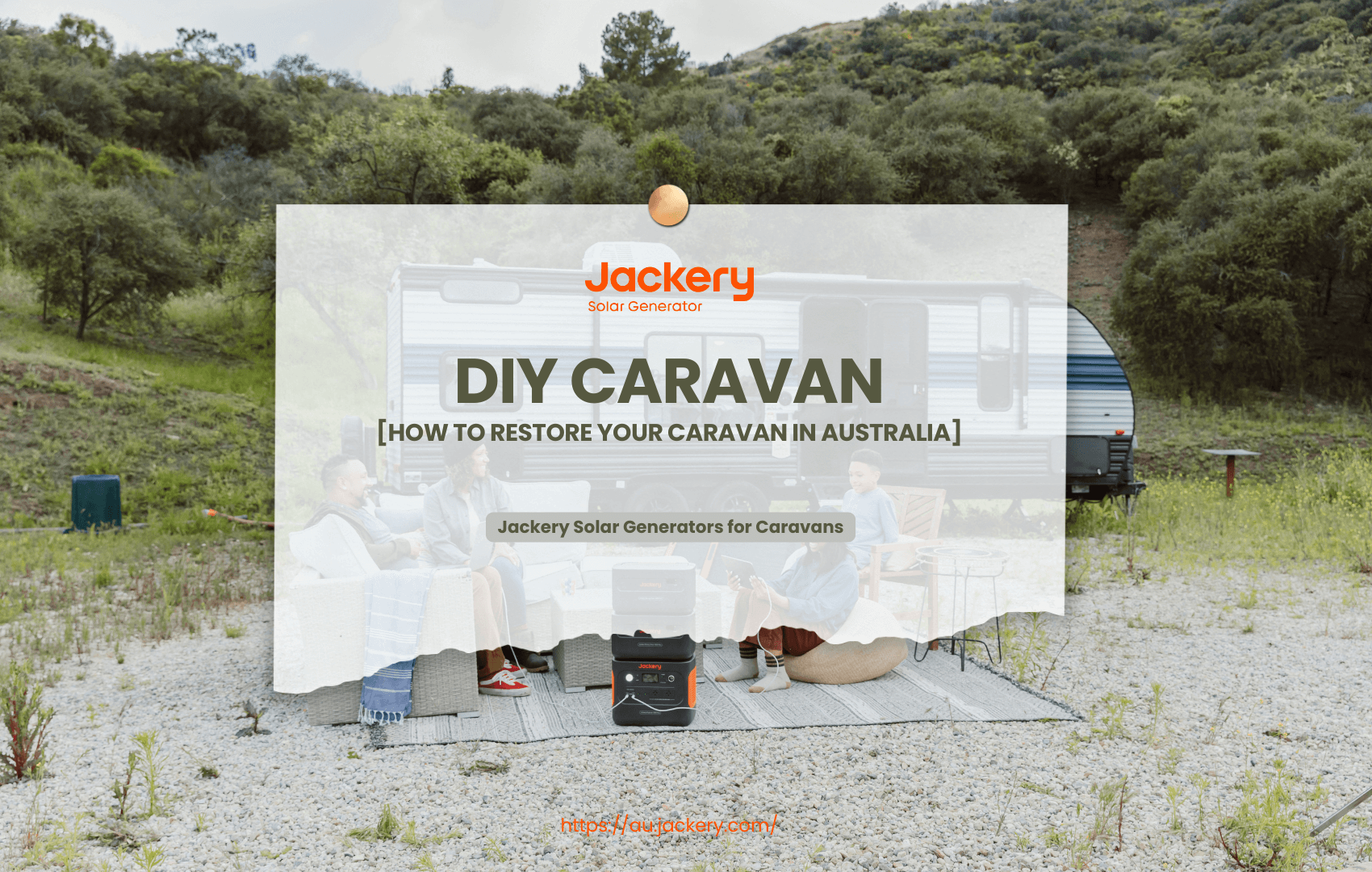|
Key Takeaways: |
|
- Everest Base Camp is located on the southern side of Nepal and the northern side of Tibet, with most trekkers choosing the Nepal route for accessibility and experience. - The trek to Everest Base Camp typically takes 12 to 14 days, including acclimatisation days, to avoid altitude sickness. - The oxygen level at Everest Base Camp is about 50% of sea level, requiring careful acclimatisation and physical readiness. - Accommodations along the route range from basic tea houses to more comfortable lodges, depending on the village and altitude. - Australians need a tourist visa for Nepal, which can be obtained on arrival or online before travel. - We recommend a Jackery Explorer 300 Plus portable power station to power your electronics and devices outdoors. |
Where Is Everest Base Camp?
Mount Everest towers over the landscape on the boundary between China's Tibet Autonomous Region and Nepal. Therefore, the North Base Camp in Tibet and the South Base Camp in Nepal are the two primary routes to the peak. In terms of accessibility, topography, and exposure to local culture, both camps provide breathtaking views of Everest and the surrounding Himalayas, but they offer rather distinct experiences.
South Base Camp – Nepal
Altitude: 5,364 meters (17,598 feet)
Access: A flight from Kathmandu to Lukla is typically followed by a multi-day hike across the Khumbu Valley.
Experience: The trail is known for its immersive hiking experience, passing through traditional Sherpa communities, monasteries, and various landscapes. Trekkers frequently highlight the cultural and environmental beauties they discover along the way.
Duration: Approximately 12-14 days round trip, allowing for acclimatisation and exploration.
Best For: Those seeking a physically engaging trek combined with deep cultural immersion.
At 5,364 meters above sea level, the South Base Camp is the more well-liked choice for hikers. Most tourists take a plane from Kathmandu to Lukla and then start a multi-day hike through the picturesque Khumbu Valley to get there.
Trekkers encounter Sherpa communities with strong Buddhist links while passing through well-known villages like Tengboche and Namche Bazaar. The journey offers a combination of personal achievement, natural beauty, and cultural immersion, and it is both physically taxing and incredibly fulfilling.
The majority of trekking routes to the South Base Camp include necessary acclimatisation days to avoid altitude sickness and last 12 to 14 days round-trip. The trail offers constantly shifting views as it winds through forests, suspension bridges, glacier valleys, and high-altitude plateaus. Teahouses provide simple yet quaint overnight stays, enabling a more intimate interaction with local hosts. This route is perfect for active adventurers seeking a genuine Himalayan trekking experience.
The Nepal side is strongly suggested for those looking for a more immersive and energetic experience. Many Australians consider it the trip of a lifetime because of the blend of culture, difficulty, and nature. The experience gains depth from the bonds made with locals and other hikers. It should come as no surprise that this hike is regarded as one of the most famous multi-day treks worldwide.

North Base Camp – Tibet
Altitude: 5,150 meters (16,900 feet)
Access: Accessible by road from Lhasa, with travellers often driving to the base camp area.
Experience: Offers panoramic views of Everest’s North Face and a glimpse into Tibetan culture. The journey includes visits to significant sites like the Rongbuk Monastery.
Duration: Typically, 8-10 days, depending on the itinerary and acclimatisation needs.
Best For: Travellers preferring a less strenuous journey with the convenience of vehicular access and those interested in Tibetan landscapes and culture.
The North Base Camp in Tibet, which is 5,150 meters above sea level, provides an alternative Everest experience. Visitors typically take a car from Tibet's capital, Lhasa, to the camp rather than trekking for many days. Although it entails far less physical effort, this route involves lengthy drives across the Tibetan Plateau. It works best for tourists who are pressed for time or who are unwilling or unable to finish a high-altitude hike.
Not visible from the Nepal side, the North Base Camp provides breathtaking panoramic views of Everest's enormous north face. The trip is made more spiritual by the opportunity for visitors to see the neighbouring Rongbuk Monastery, the highest monastery in the world.
However, group travel permits and guides are required because this camp is frequently restricted to solo tourists and is subject to stricter regulations by Chinese officials. Accessibility can be impacted by political and weather factors as well.
Despite the unquestionably beautiful surroundings, the experience is less personal than walking through the Khumbu region. Tented camps or simple lodges are available during the trekking season; accommodations are more practical than cultural.
This might be the route for you if you want to see the expansive, open Tibetan Plateau landscapes and get a close-up look at the icy face of Everest without having to deal with the strenuous nature of hiking. Acclimatisation is still necessary, though, because the altitude is still high and may be harmful to one's health.
The North Base Camp is advised for those seeking a less strenuous but well-planned trip. It provides a great chance to get a close-up look at Everest without committing to a demanding hike.
Which Base Camp Should You Choose?
Depending on what kind of experience they want, travellers can choose between the South and
North Base Camps.:
Opt for the South Base Camp in Nepal if you’re seeking:
A challenging and rewarding trekking experience.
Close interaction with Sherpa communities and Nepalese culture.
Diverse landscapes, from lush forests to alpine terrains.
Consider the North Base Camp in Tibet if you prefer:
Easier access without extensive trekking.
Expansive views of Everest’s North Face.
An introduction to Tibetan culture and high-altitude landscapes.
Breathing Easy at Altitude: Coping with Low Oxygen at Everest Base Camp
Although trekking to Everest Base Camp (EBC) is an exciting adventure, there are special difficulties because of the high altitude, especially with oxygen availability. EBC has around 50% less oxygen than sea level at an elevation of 5,364 meters (17,598 feet). This substantial decrease raises the risk of altitude-related diseases and impairs physical performance. A successful and safe hike depends on knowing these consequences and planning appropriately.

Understanding Oxygen Levels at High Altitude
There are fewer oxygen molecules per breath at higher elevations because of a drop in air pressure. Even though there is still roughly 21% oxygen in the air, your body gets less oxygen with each breath due to the decreased pressure. This causes the body to work more to get the oxygen it needs at EBC, frequently resulting in symptoms like exhaustion and shortness of breath. It's critical to acknowledge these shifts and appropriately modifying your activity and speed is critical.
Acclimatisation: The Key to Coping with Thin Air
When trekking to EBC, proper acclimatisation is essential. This lowers your chance of developing Acute Mountain Sickness (AMS) and enables your body to adjust to the dropping oxygen levels.
To help with this adjustment, a well-planned itinerary usually incorporates acclimatisation days at key locations, like Namche Bazaar (3,440 meters) and Dingboche (4,410 meters). Light walks to higher elevations during these rest days, followed by a descent to lower levels for sleep, can facilitate the acclimatisation process.
Recognising and Managing Altitude Sickness
Regardless of fitness level, anyone can get altitude sickness. Headaches, nausea, lightheadedness, and irregular sleep patterns are typical symptoms. It's critical to drop to a lower altitude and, if required, seek medical help if symptoms develop or continue. A gradual ascent, drinking enough water, eating healthily, and abstaining from alcohol are all preventative methods. After speaking with a healthcare provider, some hikers additionally take drugs such as acetazolamide (Diamox).
Tips for Australian Trekkers
It is essential for Australians who are considering going on the EBC trek to take into consideration the following:
Physical Preparation: Engage in regular cardiovascular and strength training exercises to build endurance.
Gear Selection: Invest in quality trekking gear suitable for cold and variable weather conditions.
Travel Insurance: Ensure your insurance covers high-altitude trekking and potential medical evacuations.
Guided Tours: Consider joining guided treks offered by reputable companies experienced in EBC expeditions.
Accommodations on Everest Base Camp
Various lodging alternatives are available through the Everest Base Camp (EBC), the majority of which are teahouses. The comfort level and amenities available at each teahouse vary according to the location's altitude and degree of difficulty.
Option 1: Teahouses - The Traditional Choice
The most popular lodging option along the EBC trail is a teahouse. These are locally owned lodges that provide hikers with simple food and lodging. Typically, rooms are basic, featuring shared restrooms, twin beds, and a tiny table. The amenities are more basic as you go up, so it's important to modify your expectations appropriately.
Option 2: Luxury Lodges - Comfort at a Cost
Luxury lodges offer enhanced amenities such as private bathrooms, hot showers, and more diverse meal options for those seeking more comfort, especially at lower altitudes. These lodges are more prevalent in areas like Lukla and Namche Bazaar. However, as you progress higher, such facilities become scarce.
Option 3: Camping - For the Adventurous
Although it's less popular, some hikers choose to camp, particularly if they're travelling with a group. Although camping is an option for individuals who want to be alone, it's usually not essential unless you go off the usual route because there are so many teahouses. Although camping allows you greater freedom and a closer relationship with nature, it also necessitates more preparation for bringing cooking supplies and tents.
Facilities and Amenities: What to Expect
Setting expectations and ensuring readiness can be facilitated by being aware of the available facilities.
Bathrooms: Teahouses at lower elevations could have Western-style restrooms, but squat toilets are more common as you go higher. Some teahouses offer hot showers for a charge; however, there might not be enough water.
Electricity and Charging: The majority of teahouses have electricity; however, charging gadgets are frequently charged. Carrying extra batteries and power banks, like Jackery Portable Power Station, is advised.
Wi-Fi and Connectivity: Some teahouses provide Wi-Fi, particularly those at lower elevations. However, the connection can be erratic and may be expensive. It might be more dependable to get a local SIM card with data.
Meals: Noodles, pancakes, and dal bhat (lentil soup with rice) are among the typical dishes served at teahouses. The expense of transportation makes food more expensive as you go up.
What Gear and Equipment Should I Pack?
Careful planning is necessary for the Everest Base Camp (EBC) journey, particularly with regard to packing the appropriate supplies and equipment. Being well-prepared is crucial because the walk offers a variety of weather conditions, difficult terrain, and few amenities. Here is a thorough guide to help you pack efficiently for your EBC expedition, based on advice from seasoned hikers and reliable sources.

Clothing
Layering is essential for maintaining comfort during the EBC trip. This method lets you modify your attire according to the changing weather and temperature.
Base Layers: Moisture-wicking thermal tops and bottoms to keep you dry.
Insulating Layers: Fleece or down jackets to retain body heat.
Outer Shell: Waterproof and windproof jackets and pants to protect against the elements.
Trekking Pants: Lightweight and quick-drying pants for daily hikes.
Thermal Socks: Multiple pairs to keep your feet warm and dry.
Gloves: Both lightweight liners and insulated gloves for varying temperatures.
Headwear: Warm beanies for cold conditions and sun hats for daytime protection.
Footwear
There is a direct correlation between the footwear you choose and the quality of your hiking experience; therefore, it is essential to consider comfort and support.
Trekking Boots: Sturdy, waterproof boots with good ankle support are essential.
Camp Shoes: Lightweight shoes or sandals for relaxation at teahouses.
Gaiters: Useful for keeping debris and moisture out of your boots.
Backpacks
Efficient packing ensures you carry only what’s necessary.
Daypack (20-30L): For essentials like water, snacks, and personal items during daily hikes.
Duffel Bag (60-80L): Carried by porters, this holds the bulk of your gear.
Sleeping Essentials
A restful night's sleep is absolutely necessary for recuperation while on the journey.
Sleeping Bag: A four-season sleeping bag rated for temperatures as low as -10°C to -15°C.
Sleeping Bag Liner: Adds extra warmth and keeps your sleeping bag clean.
Trekking Accessories
A number of gadgets have the potential to enhance your experience of trekking dramatically.
Trekking Poles: Aid in balance and reduce strain on knees during ascents and descents.
Headlamp: Essential for early morning starts or navigating teahouses at night.
Sunglasses: UV-protected glasses to shield your eyes from intense sunlight and snow glare.
Water Bottles/Hydration Bladder: Ensure you carry at least 2 litres of water daily.
Water Purification Tablets: Treat water from local sources to prevent waterborne illnesses.
Personal Items
It is essential to bring personal care supplies, particularly considering the limited amenities that are located along the trail.
Toiletries: Biodegradable soap, toothbrush, toothpaste, and quick-dry towel.
Hand Sanitiser and Wet Wipes: These are used to maintain hygiene when water is scarce.
Sunscreen and Lip Balm: Protect your skin and lips from sunburn and chapping.
First Aid Kit: Include band-aids, antiseptic cream, blister treatment, and any personal medications.
Altitude Sickness Medication: Consult your doctor about medications like Diamox.
Electronics and Documentation
It is vital to include some electronic devices and documents, despite the fact that the walk provides an opportunity to disconnect.
Camera: Capture the stunning landscapes and moments.
Jackery Explorer 300 Plus: Charging facilities are limited; Jackery Explorer 300 Plus ensures your devices stay charged.
Travel Adapter: Nepal uses Type C, D, and M plugs.
Permits and Identification: Carry your passport, TIMS card, and Sagarmatha National Park permit.
Cash: ATMs are scarce along the trail; bring sufficient Nepalese Rupees for expenses.

Jackery Portable Power Station Explained
Taking a Jackery Portable Power Station to Everest Base Camp (EBC) can offer significant advantages, primarily focused on convenience, safety, and the ability to stay connected in a remote environment with limited or unreliable access to electricity.
At EBC, you'll want to capture the incredible scenery with cameras and phones. A Jackery ensures you can recharge these devices multiple times without relying on often crowded and potentially expensive charging stations in tea houses.
Staying in touch with loved ones or coordinating with your trekking group is crucial. A power station keeps your phone charged for calls, messaging, and potentially using satellite communication devices. GPS devices, headlamps, and even some medical devices might require charging. A reliable power source is essential for safety, especially in emergencies. We highly recommend Jackery Explorer 300 Plus for your trip, not merely Everest Base Camp.
Jackery Explorer 300 Plus
Weighing only around 8.27 lbs (3.75 kg), the Explorer 300 Plus is designed to be easily carried in your gear. This is crucial when trekking to EBC, where every ounce counts. It offers a good balance between power capacity and portability compared to larger, heavier models.

A 288Wh capacity provides significant power to keep your essential devices running for several days, depending on your usage. This is often sufficient for charging phones, cameras, headlamps, and smaller electronics without being excessively bulky.
The Explorer 300 Plus typically features multiple USB-A ports and, importantly, one or more USB-C ports with Power Delivery (PD) up to 100W. This allows you to charge modern smartphones, tablets, and even some laptops directly via USB-C, often faster than traditional USB-A.
It includes a 300W AC outlet (with a 600W peak), allowing you to power small appliances or devices that require a standard wall socket, such as camera battery chargers or low-power medical devices (like some CPAP machines – always verify compatibility and power draw).
Many reviews and specifications indicate that the Explorer 300 Plus utilises a Lithium Iron Phosphate (LiFePO4) battery. This type of battery offers several advantages for challenging environments like EBC: LiFePO4 batteries typically have significantly more charge cycles (often 3,000 or more to 80% capacity) compared to traditional lithium-ion batteries, making them more durable for extended trips.
Like other Jackery power stations, the Explorer 300 Plus is compatible with Jackery SolarSaga 40W solar panels. While the weather at EBC can be unpredictable, having the option to recharge using solar power can be invaluable for extending your power supply during longer stays, especially if you have sunny days.
|
Jackery Explorer 300 Plus Running Time |
|
|
Phone (29W) |
13 Times |
|
Laptop (80W) |
2.2 Times |
|
Ventilator (20W) |
11H |
|
Flashlight (5W) |
16.4H |
|
Electric Blanket (100W) |
2.2H |
(*The working hours are only for reference; the actual working hours depend on your usage.)
Permits and Entry Requirements for the Everest Base Camp
Before beginning the Everest Base Camp (EBC) trip, certain licenses must be obtained to guarantee legal access, environmental preservation, and support for local people. All hikers, including Australians, must have the following permits as of 2025:
Sagarmatha National Park Entry Permit
Purpose: Grants access to Sagarmatha National Park, a UNESCO World Heritage Site encompassing the EBC trail.
Cost: NPR 3,000 per person (approximately AUD 35), plus 13% VAT.
Where to Obtain:
Option 1: Nepal Tourism Board office in Kathmandu.
Option 2: Sagarmatha National Park Entry Gate in Monjo.
Requirements: Valid passport and two recent passport-sized photographs.
Note: It’s advisable to secure this permit in Kathmandu to avoid potential queues at Monjo, especially during peak trekking seasons.
Khumbu Pasang Lhamu Rural Municipality Permit
Purpose: Supports local infrastructure and development in the Khumbu region.
Cost: NPR 2,000 per person (approximately AUD 23).
Where to Obtain:
Option 1: Permit counter in Lukla.
Option 2: Sagarmatha National Park counter in Monjo.
Requirements: Valid passport and two recent passport-sized photographs.
Note: This permit has replaced the previously required TIMS (Trekkers’ Information Management System) card for the EBC trek.
Nepal Tourist Visa
Purpose: Legal entry into Nepal for tourism purposes.
Cost:
15-day visa: USD 30.
30-day visa: USD 50.
90-day visa: USD 125.
Where to Obtain:
Option 1: On arrival at Tribhuvan International Airport in Kathmandu.
Option 2: Online via the official Nepal Immigration website.
Requirements: Valid passport with at least six months’ validity and a recent passport-sized photograph.
Note: Ensure you have the appropriate visa duration to cover your entire stay, including buffer days for acclimatisation or unforeseen delays.
Additional Considerations
Solo Trekking Ban: As of April 1, 2023, Nepal has banned solo trekking in certain regions to enhance safety and support local employment. While the EBC trail is popular and well-trodden, checking the latest regulations regarding guide requirements before your trip is essential.
Permit Validity: Permits are typically valid for the duration of your trek. Ensure you retain copies of all permits throughout your journey, as they may be checked at various points along the trail.
Is Everest Base Camp Worth It?
Trekking to Everest Base Camp (EBC) is a dream come true for many Australian tourists and a top excursion on their bucket list. But it's reasonable to wonder if it's really worth the time, money, and physical strain required.
The trip provides more than simply a view of the highest peak in the world, from the stunning Himalayan vistas to the intense cultural immersion in Sherpa settlements. Using Australian travel resources and firsthand knowledge, we'll outline the main attractions of the EBC trek in this part, along with an estimate of the prices.
Unforgettable Highlights
Starting off on the Everest Base Camp journey will provide you with a variety of unforgettable experiences, including the following:
Scenic Diversity: The Everest Base Camp trail offers more visual drama and continuous scenery change than most treks in the globe. Every step changes the scenery, which ranges from broad alpine meadows and cold glacial moraines to deep pine woods and suspension bridges across thundering rivers.
Famous peaks like Ama Dablam, Lhotse, and Everest itself start taking over the skyline as hikers continue their ascent. Australian adventure travel agencies like World Expeditions claim that one of the main reasons their customers pick EBC is the region's varied topography and breathtaking vistas.
Cultural Immersion: The opportunity to interact with the Sherpa people, the original occupants of the Khumbu region, is among the most fulfilling parts of the EBC climb. Trekkers visit historic Buddhist monasteries, such as the famous Tengboche Monastery, and stroll through isolated mountain settlements while dining at teahouses.
These encounters provide an understanding of a way of life that hasn't altered much throughout the years. This strong cultural component is what sets EBC apart from other high-altitude walks worldwide.
Personal Achievement: At 5,364 meters, reaching Everest Base Camp is no easy task; it calls for planning, stamina, and mental fortitude. The majority of hikers say that being in the shadow of the highest mountain in the world gives them a tremendous sense of accomplishment.
For good reason, many Australians spend months training for this objective, which has emotional as well as physical rewards. The transformational nature of the voyage is repeatedly emphasised in testimonies from Australian organisations such as Intrepid Travel.
Cost Considerations
The cost of the Everest Base Camp journey can change depending on a number of criteria, such as the desired level of comfort, the length of the trek, and the services that are included:
Budget Options: Expenses can range anywhere from 3,000 to 4,000 Australian Dollars for someone who is on their own or who is on a limited budget. As a general rule, this includes the cost of permits, fundamental lodging, meals, and flights within Nepal.
Mid-Range Packages: The cost of organised group treks with reputable firms often falls somewhere in the range of 4,500 to 6,000 Australian Dollars. The majority of the time, these packages include guided services, porters, lodging, meals, and any relevant permissions.
Luxury Experiences: Luxury treks might cost anywhere from AUD 6,000 to AUD 8,000 or even more for individuals who are looking for an additional level of comfort. Upgraded rooms, helicopter transfers, and individualised services are frequently included with these accommodations.
Flights from Australia to Kathmandu, travel insurance, the purchase or rental of equipment, and personal expenses incurred on the journey are all additional costs that should be taken into consideration.
Everest Base Camp FAQs
The following are the frequently asked questions about the Everest Base Camp.
1. How hard is it to walk to Everest Base Camp?
The Everest Base Camp hike is considered quite difficult. It covers about 130 kilometres round-trip and usually takes 12 to 14 days to finish. Trekkers climb for 5 to 8 hours daily over rough terrain and steep inclines. The biggest problem is the high altitude, which can cause altitude sickness if not well acclimatised.
2. Can a beginner climb Everest Base Camp?
Yes, beginners can do the Everest Base Camp trek. Prior trekking experience is recommended but not required. Many first-time trekkers succeed with good physical preparation, acclimatisation, and a cheerful attitude.
3. What percentage of people make it to Everest Base Camp?
Approximately 70% of individuals who try the trek reach Everest Base Camp (5,364 meters). Altitude sickness, physical fitness, and meteorological conditions all impact the success rate.
4. How much money do I need to go to Everest Base Camp?
The cost varies according to services and preferences. A budget trip can cost roughly $750, whereas standard packages run from $1,000 to $3,000. Luxury expeditions, which include helicopter transfers and upscale hotels, can cost more than $5,000. Additional costs include overseas flights, equipment, insurance, and personal expenses.
5. Is it hard to breathe at Everest Base Camp?
Yes, breathing is more difficult at Everest Base Camp due to lower oxygen levels—about half of what is available at sea level. This can cause symptoms such as shortness of breath and exhaustion. Proper acclimation and pace are required to counteract these effects.
Final Thoughts
Trekking to Everest Base Camp is a life-changing adventure that tests the body and lifts the soul; it's not just a climb. The key is preparation, from figuring out the paperwork to packing the appropriate equipment and comprehending the physical needs. The rewards are enormous, though, and include amazing landscapes, cultural encounters, and the enduring friendship of other travellers.
This trip provides lifelong experiences, regardless of your goals—whether they be personal milestones or the pure excitement of the Himalayas. Everest Base Camp may be a safe and fulfilling experience for any resolute Australian hiker with the proper preparation and attitude.

